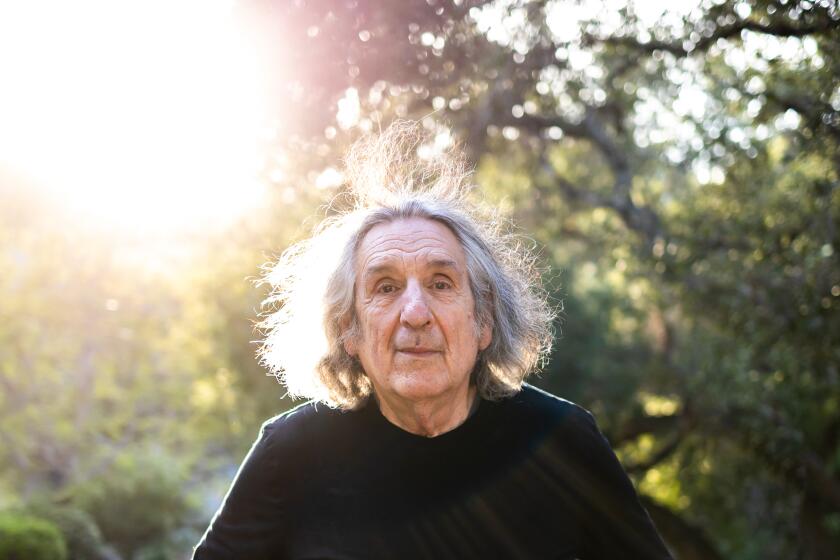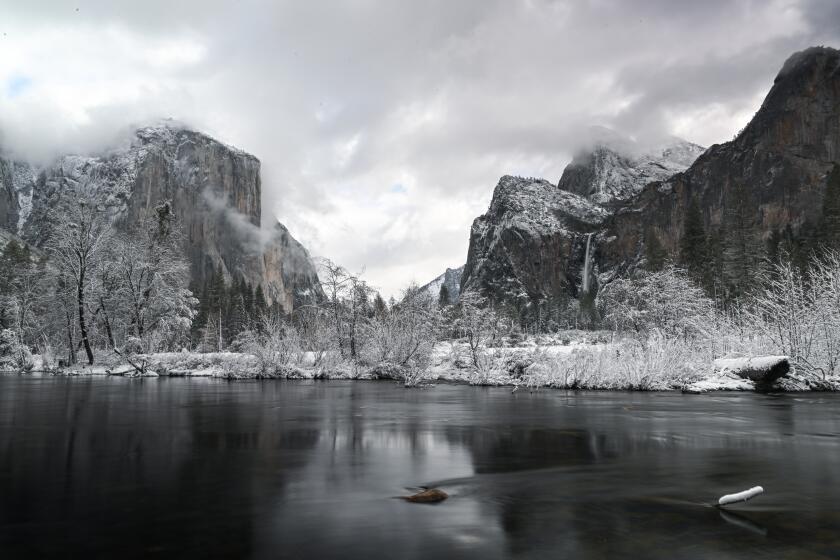The odd couple that saved Yosemite
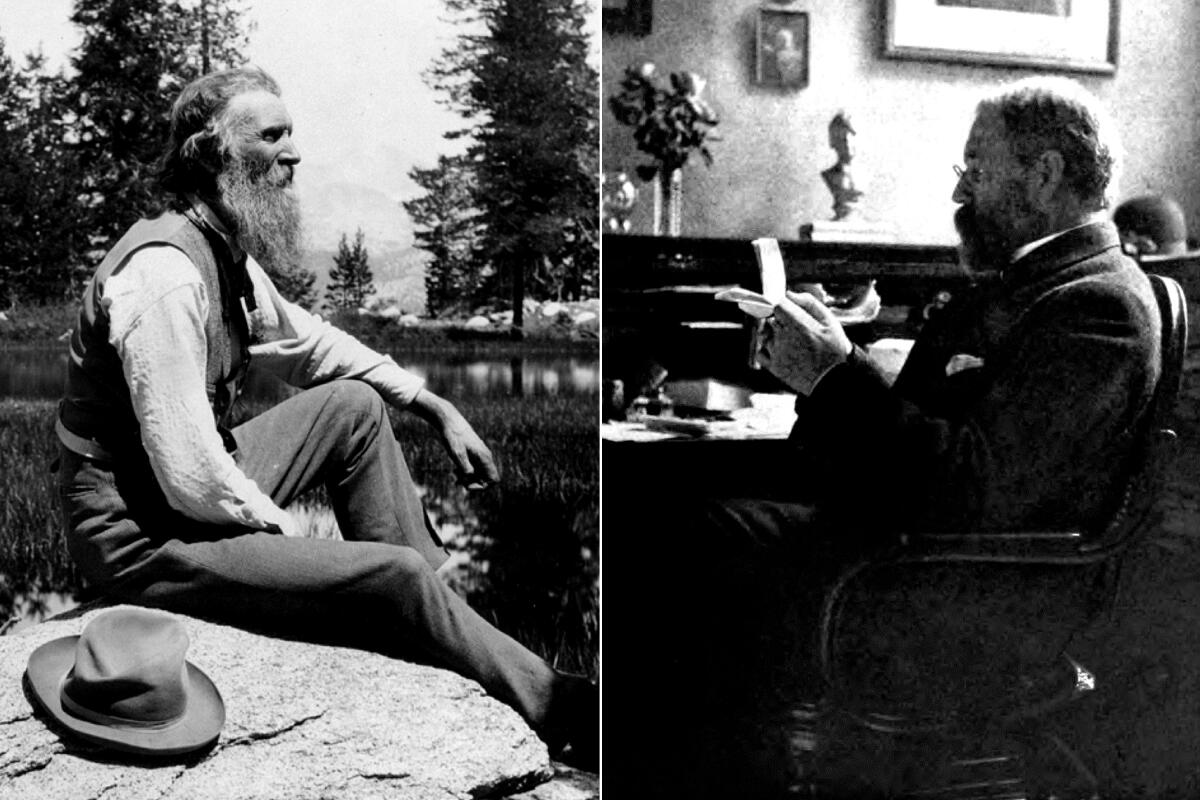
- Share via
Review
Guardians of the Valley: John Muir and the Friendship That Saved Yosemite
By Dean King
Scribner: 480 pages, $30
If you buy books linked on our site, The Times may earn a commission from Bookshop.org, whose fees support independent bookstores.
John Muir and Robert Underwood Johnson were unlikely allies in the war to preserve Yosemite. Muir, son of a Scripture-quoting Scottish immigrant father, was raised poor on a Wisconsin farm, but he wrote and spoke with the fervor of a prophet, and his craggy visage, tough constitution and unshakable devotion to the natural world drew admirers like a magnet. The urbane and cultured Johnson was an insider with a vast network of contacts in publishing and politics. The editor of one of the country’s preeminent magazines, Johnson hosted New York literary salons, mingled with America’s elite and eventually became the U.S. ambassador to Italy.
It was improbable that they even met — Muir was on the West Coast, Johnson on the East. But on one memorable journey into the California kingdom now known as Yosemite National Park, the two agreed to pull together to wage the nation’s “first great environmental war,” battling through the administrations of seven presidents to save Yosemite. It’s fair to say that the valley’s matchless terrain and fragile ecosystem would have been logged, plowed and plundered without their relentless efforts. Veteran nonfiction writer Dean King tells their story in “Guardians of the Valley: John Muir and the Friendship that Saved Yosemite.”
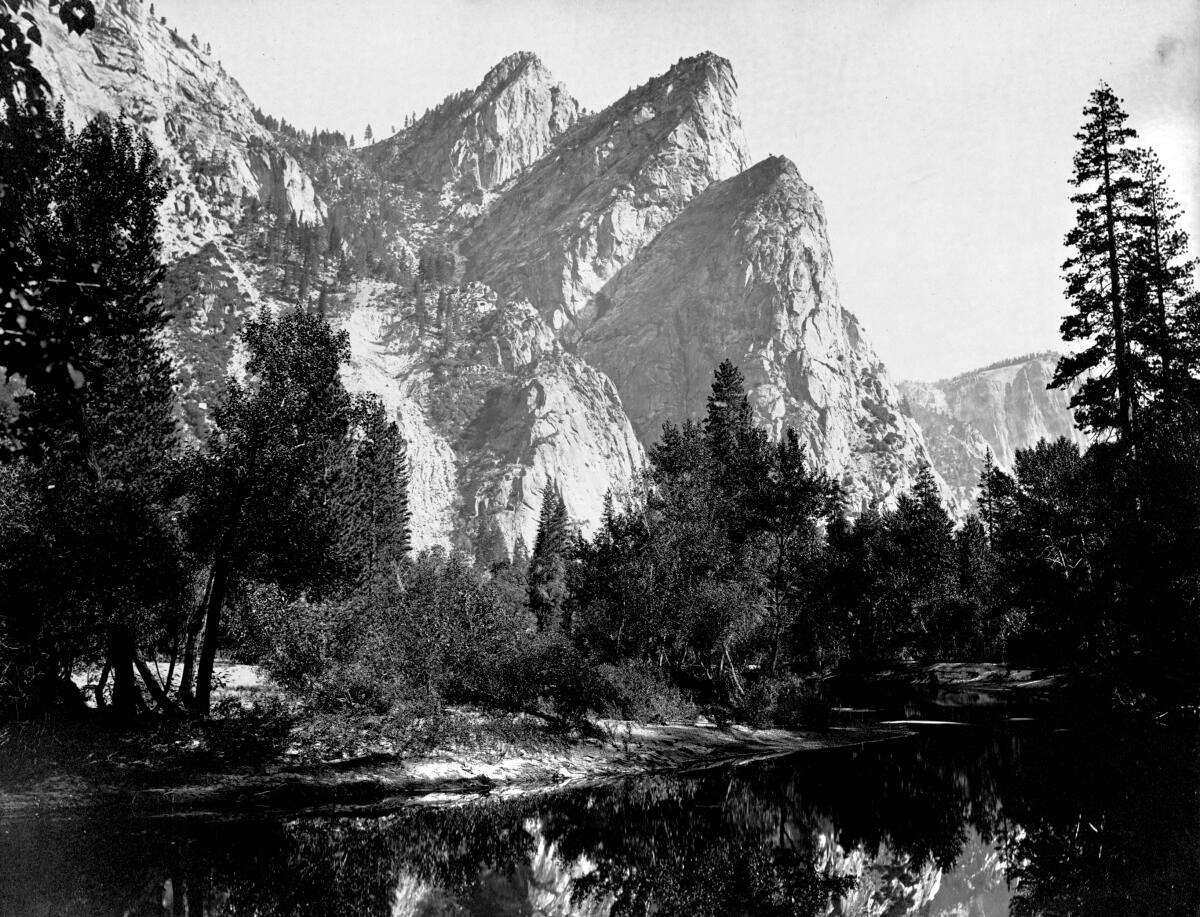
Muir arrived in California in 1868, after years of wandering and barely two decades after the Gold Rush opened the floodgates to white settlement of California. He headed straight for Yosemite. Abraham Lincoln had signed legislation giving the state authority to preserve the valley, but soon it was under assault anyway — giant trees cut down so tourists could get a better view, virgin wildflower meadows denuded by herds of grazing sheep.
John Perlin’s sweeping, civilizational history ‘A Forest Journey’ is being revived by Patagonia, the Ventura-based outfitter’s publishing imprint.
By 1889, Muir was a nationally known author and activist. When Johnson arrived in San Francisco to edit a series on the Gold Rush for the Century magazine, he wanted to meet Muir, and he wanted to see Yosemite. They hiked, climbed and camped together, and on the journey Muir shared his gloom about Yosemite’s fate. The valley was already getting 5,000 visitors a year, and he feared its decimation was inevitable.
Johnson had other ideas. He had experienced Muir’s powerful charisma firsthand, writing that “In the wilderness, Muir looked like John the Baptist. … He was spare of frame, full-bearded, hardy, keen of eye and visage, and on the march eager of movement.” Johnson had edited the likes of Mark Twain and Ulysses S. Grant, and he believed that Muir’s transcendent prose could help save Yosemite. The two joined forces.
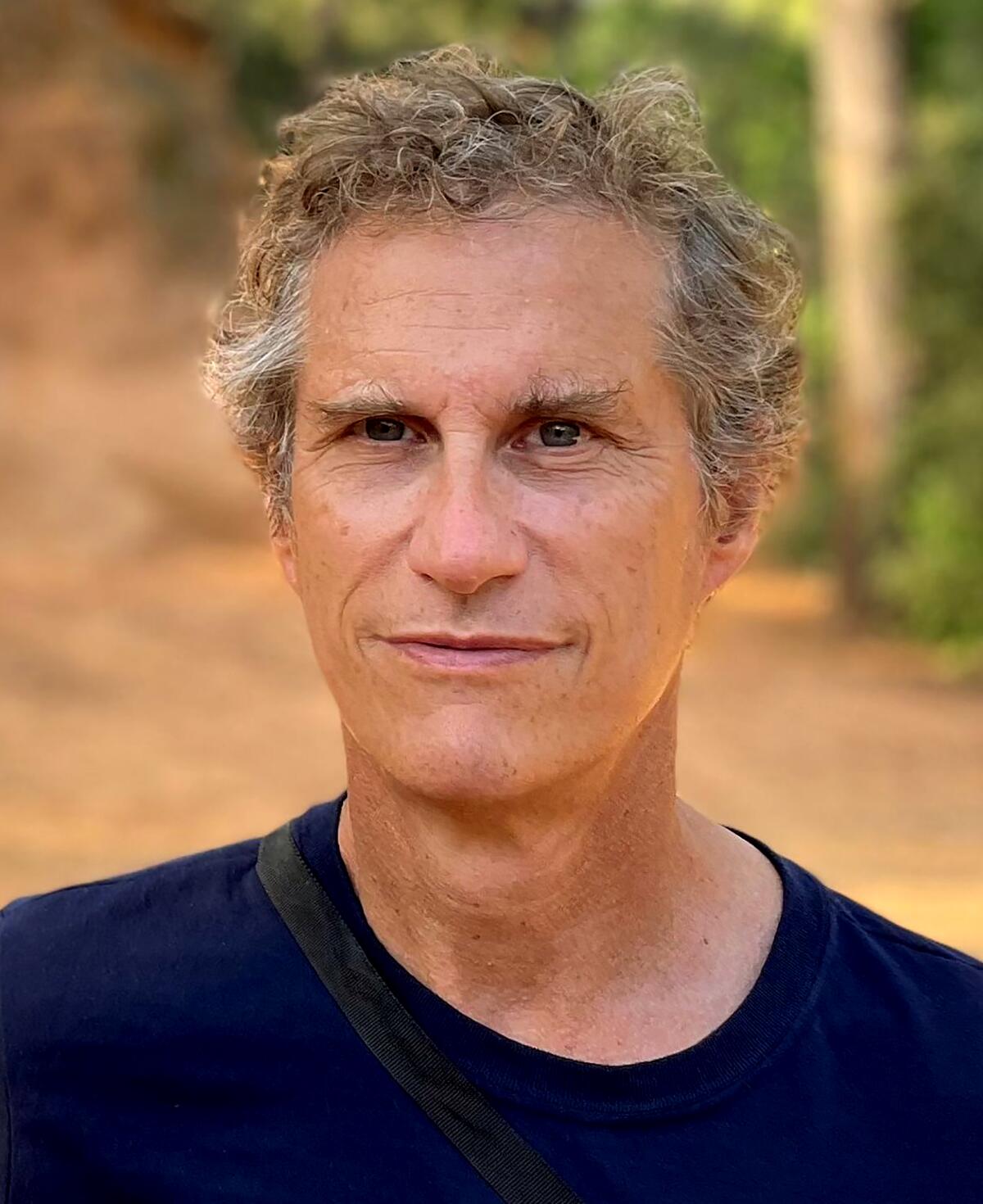
In King’s telling, this odd couple largely drove the movement to turn Yellowstone into a national park: Muir the “Poet, heart and soul of their two-man preservation movement, and Johnson the ringmaster.” Muir wrote magnificent paeans to Yosemite; Johnson published them. Muir took Teddy Roosevelt camping; Johnson watched Congress and timed Muir’s articles for maximum influence.
The duo and their allies initially had spectacular success; first getting Congress to preserve the park, then moving the portion of Yosemite Valley ceded to California by Lincoln’s grant into federal control. Under national supervision, Yosemite began to recover. But local interests had little input into any of this, and after the San Francisco earthquake and fire of 1906, a new threat emerged. The citizens of San Francisco had watched buildings burn for lack of water to douse the fire, and a groundswell of support emerged for the city to dam and flood Yosemite’s Hetch Hetchy Valley to guarantee San Francisco a plentiful and pure supply of water.
All roads inside the park have been restricted to administrative use only.
Networking among America’s elites had helped save Yosemite National Park — well-connected graduates of Yale and Harvard adopted Muir’s cause as their own, introduced Muir to presidents and lobbied Congress. But support for their movement was thin among Californians in the business and working classes, and when it came to flooding the Hetch Hetchy, Yosemite’s defenders faced far more determined local resistance.
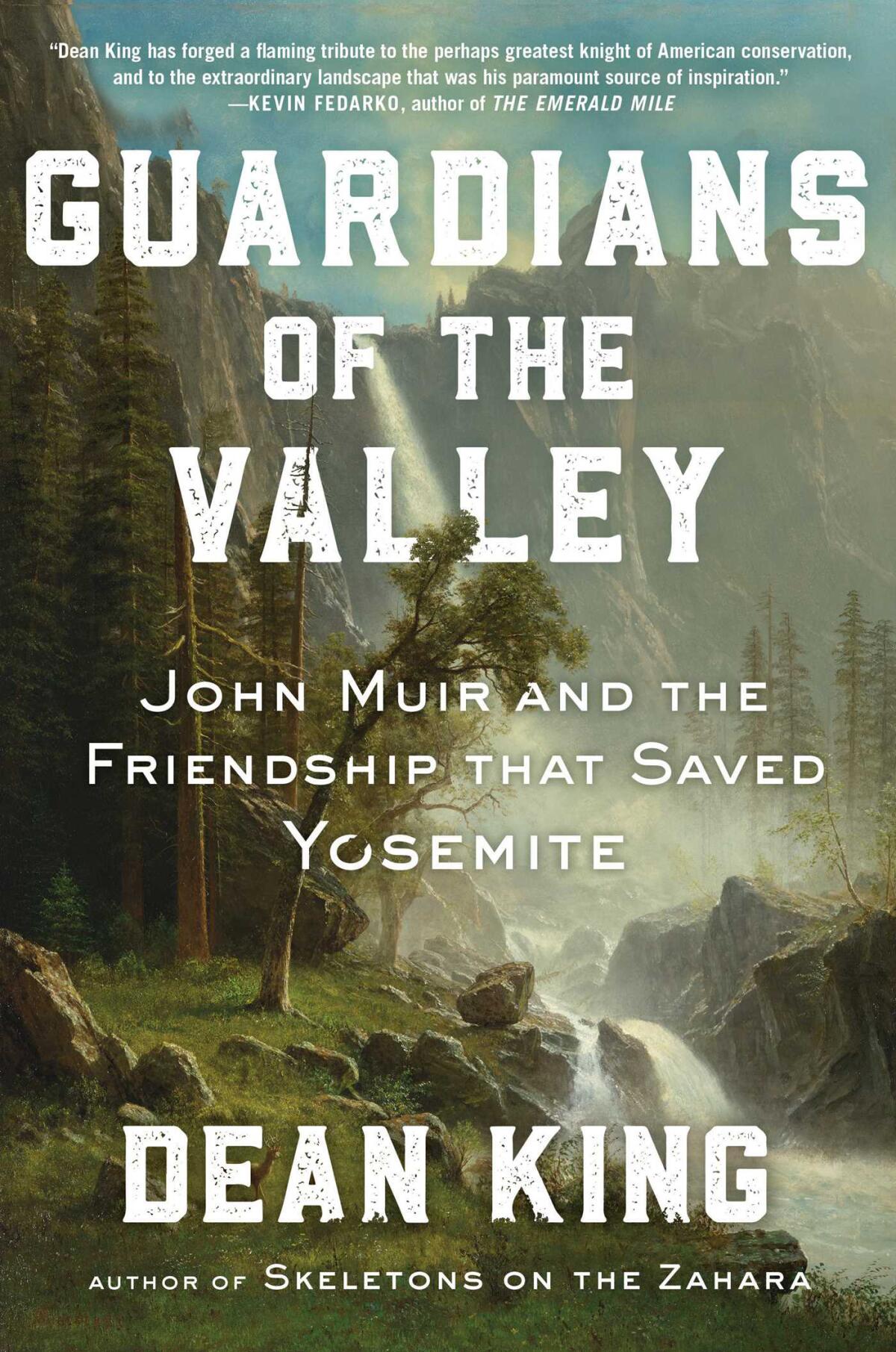
“Guardians of the Valley” tells several stories, some captivating, others instructive. Muir’s adventures in an almost virginal Yosemite will entrance park lovers, outdoor enthusiasts and California history buffs, the narrative swept along by Muir’s shimmering, deftly excerpted prose. Larger-than-life characters — Roosevelt, Ralph Waldo Emerson — make star appearances. King vividly re-creates both the San Francisco earthquake and fire and the titanic political fight that would consume both the proponents and opponents of the plan to flood the Hetch Hetchy.
Though general readers may tire of King’s blow-by-blow account of legislative efforts to save Yosemite, the book will resonate with students of environmental policy — and bring to bear on stories making California headlines every day. In our era of scarce resources, wrenching cycles of flood and drought and painful cost-benefit calculations, every argument and counterargument for flooding the valley echoes even louder.
Editorial: Coming to grips with the checkered history of John Muir — and the conservation movement
It’s far more important to take meaningful steps toward cultivating wider interest in and access to open lands than to remove Muir’s name from the many public places it adorns.
But there’s one story King mostly sidesteps — the troubling question of Muir’s legacy. He makes the lightest of passes through the controversy that has consumed environmental advocates in the 21st century: Muir’s denigrating comments about Native Americans, Black people and other humans he considered cast in an inferior mold. This issue demands attention: One reason Muir could walk, hike and climb Yosemite in relative solitude was that its Native inhabitants had recently been driven out. In 1851 a band of vigilantes known as the Mariposa battalion rampaged through Yosemite, burning the homes and food of Native Americans living there and killing male members of Yosemite tribes.
Muir’s attitudes changed over the years, and his comments about Native Americans reflected his emerging admiration of them. “Like all of us, he was a person of his time and place — and yet dramatically ahead of his time,” King writes of Muir. That is inarguable, and we can never repay what we owe Muir, both for founding the environmental movement and for beginning the process of establishing American national parks.
Today’s environmentalists have the daunting job of both preserving Muir’s efforts and dismantling the attitudes of elitism and exclusion that marked the movement’s early days, bringing the wilderness experience to a more populous, more diverse and far more complicated nation. Today Yosemite National Park gets from 3 to 4 million visitors a year. John Muir and Robert Underwood Johnson walked virtually alone through the wilderness, and their passion preserved it. Now, environmentalists must figure out how to share it.
Gwinn, a Pulitzer Prize-winning journalist who lives in Seattle, writes about books and authors.
More to Read
Sign up for our Book Club newsletter
Get the latest news, events and more from the Los Angeles Times Book Club, and help us get L.A. reading and talking.
You may occasionally receive promotional content from the Los Angeles Times.
